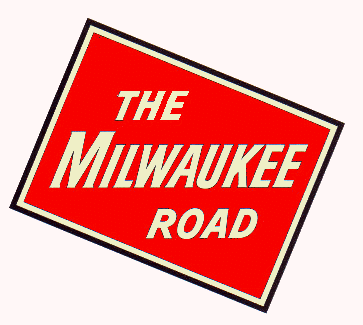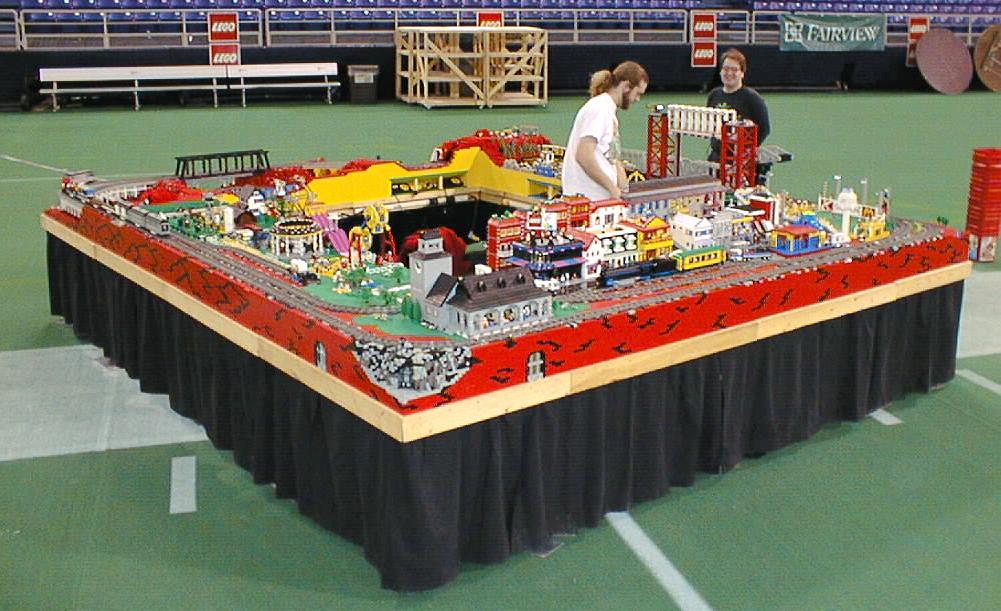
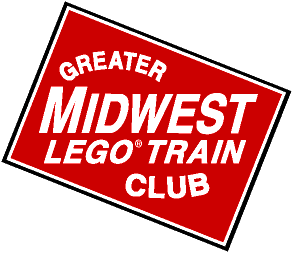
These are GMLTC pictures. They were taken at the 1998 "Great Create" held in the Hubert H Humphrey Dome in Minneapolis MN. The GMLTC has no formal organization, no structure, no officers, no dues. It is the most disorganized club I've ever "been in". I love it! Membership, such as it is, is granted by coming to Conan's, participating in building, and passing muster of the longtimers. From about February 1999 on, I've been coming by every week, since I am on a project in Minneapolis. (effective 18 June 1999, I left CTP to join Novera so I am not there anymore. sniff!)
Some information on the GMLTC is below the pictures. (Official Site is here. At least temporarily. The GMLTC has a domain of their own (gmltc.org) so long term the site will be at that location...)

Only the supporting tables (the boards and draping) are not. In the center of the layout is Conan Callopy. who owns much of the Lego in the layout. Outside the layout, behind the lift bridge is John Gerlach. John has built many of the custom cars and locomotives that comprise the club rolling stock. Much of his building is done using pieces Conan has.
There are many visual treats to be seen in this view.
These guys are a little less purist than me, note the billboards. John often uses decals or labelmaker labels to decorate his engines and rolling stock. But I can deal.
The trestle in the far left (far corner of the "diamond" as we see it, although it IS a rectangle) is curved in the sense that it matches the track curvature. But it is orthogonal. The support bents are mapped out to match up rather than the trestle itself having bents at the various angles required to support each slightly differently angled tie of the track.
The grey bridge in the background of the right side is a rolling lift model and operates, although it is rarely moved during shows. The white/red vertical lift in front of it can be moved but is not motorized either. Motorised accessories are not this club's strong suit. Yet.
John Gerlach did an arch bridge that was positioned at a 45 degree angle. It was on the old layout. Unfortunately that was destroyed. The first trailer was not adequate and on the way to the very first show that the club exhibited at, the modules all fell and smashed into component bricks.
Did you notice that the controllers are recessed into the back of the
modules? there is one bay of 2 and some misc switches directly behind Conan,
and another one to the left of him. Those vertical supports are the light
yellow (belville??) version of the
2x2x14 pillar that comes in some fright knight sets. Each module has
a bay like that, I think.
While building up 17 rows of bricks in the modules consumes an inordinate number of bricks, it DOES allow for some spectacular all Lego scenic effects such as the small gully visible at the closest corner.
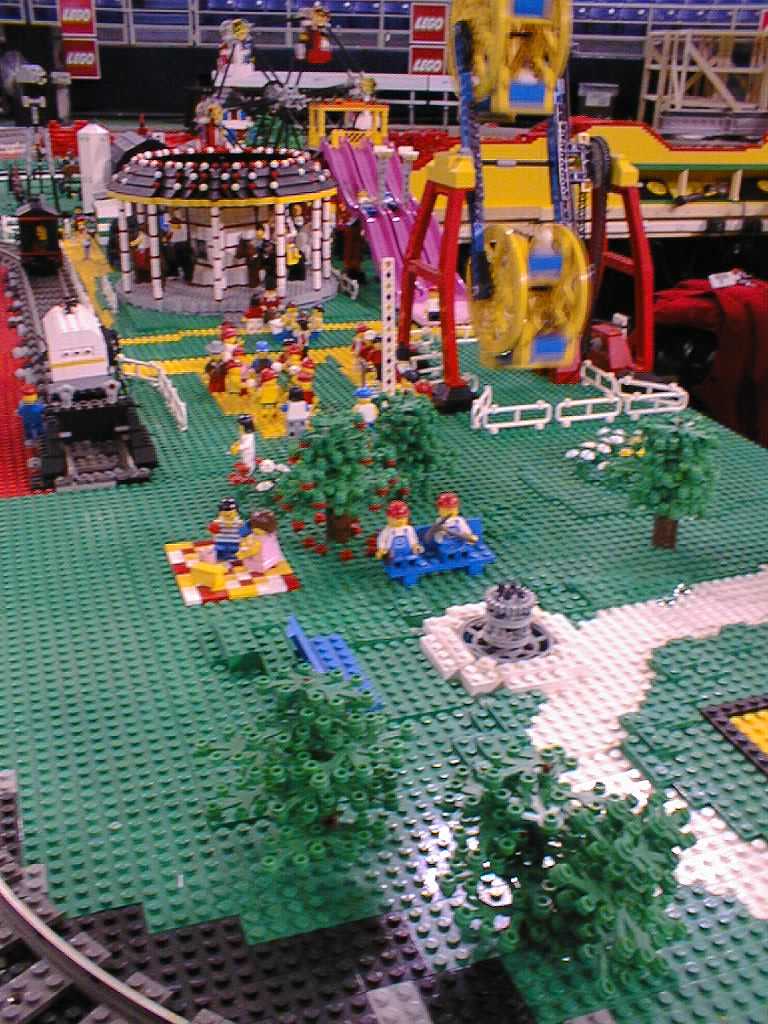
Finally, a use for all those belville slides. The foreground of this shot gives a good idea for just how much thought, work, detail, and elements go into a module The surface of the module is completely covered in bricks and plates (although the internal structure is a hollow lattice made of 2x4 and 2x2 bricks, among the very most common elements. The roadbed that the track rests on is constructed of grey and black bricks in a semi random pattern. Note the apples on the apple tree
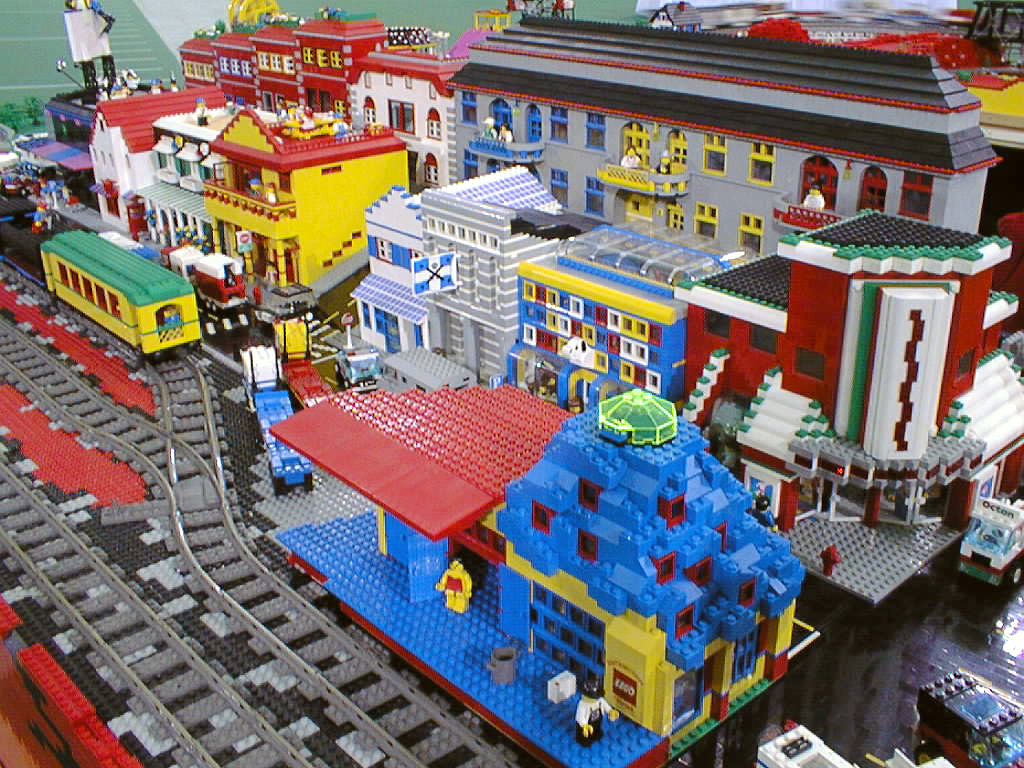
Again, the foreground gives a sense of how the roadbed is accomplished. The green coach and the black loco behind it are 8-wide. They cannot operate on the layout due to tunnel portal and other clearance issues, so are essentially on static display.
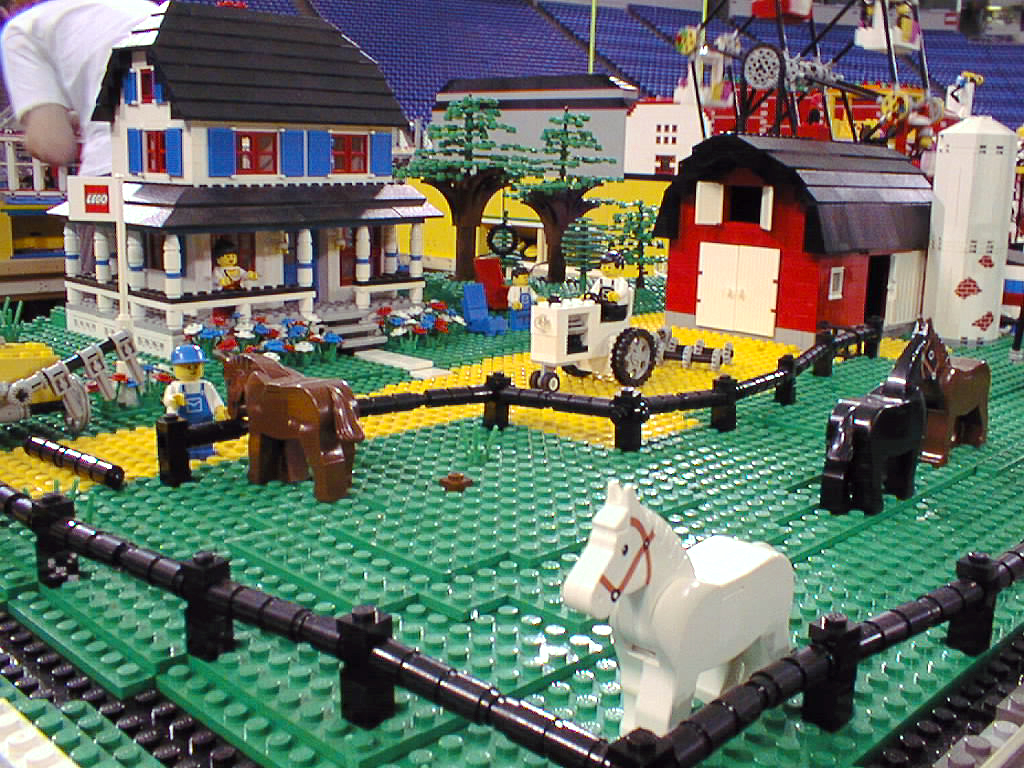
A bucolic farming scene, complete with recylable organic materials. Note the clever use of chain link as a way to simulate antique tractor wheels. Since Conan grew up with LEGO, he has some very old elements, such as the logo flag.
Other treats include the tire swing under the tree, and the silo made
of octagonal castle elements.

Conan is monkeying with the central span of the vertical lift bridge. You can see the other lift bridge (it's grey) in front. The locomotive is in the drink. That's not the normal place for it to be, of course... Note the docsk, buoys and so forth. In the background you can see the string of stock cars. The gang has made up a dozen yellowsided stockers using more yellow tiles than I have ever seen in one place.
Between shows, the layout is stored in a custom (5000.00 cost) trailer between shows and we just work on new modules.
The GMLTC modules are also built to a standard, but since the modules themselves are built completely from LEGO, little assembly is required, except for placing some structures in known locations. This means that the layout does not vary unless an existing module is re-engineered, or (as currently is being done) new modules are added.
The PNLTC and GMLTC modules are thus incompatible.
What's needed are two relatively simple transition modules since GMLTC and PNLTC modules are built to different standards. Then, connect themodules together into one gargantuan layout.
The PNLTC site has standards
listed for the table. I did not scan the plan (it's a pdf)... so these
questions may be
answered... what is the table height, and what is the track center
position on a standard module. (that is, how many tracks, and measuring
from the outside edge, what is the distance (in inches, studs, CM, whatever,
although I think the modules are sized in studs) to the center of each
track?
If the tables are way off in height the transition module would need to be big enough to take care of the elevation change.
A GMLTC module is not big enough to host a full circle of track. John
G probably knows the module dimensions. It's built all from
LEGO so natch its dimensioned in studs. Transition modules are not
uncommon in the regular modular model railroad community, especially in
HO, which had a lot of standards. N-Trak dominates N gauge, I think, so
it's less common there. I have heard of N-Trak modular setups that have
over 100 modules in them (from over 50 different people) that can host
2 and 300 car long trains. N guage is picky and does not forgive sloppiness,
so that really speaks to the tight engineering on the modules.
Unfortunately, for us, there is a limit of about 20 cars between powered units, as the magnets just won't hold more than that together. And at 20, you have to start very very slowly and gently or you will "pop a knuckle" as they say.
Here is a retouched version of a scanned image, created by John Neal. Although John originally created this logo digitally, he's a mac user :-) so he could not figure out how to save it digitally to send it to me

Here are smaller versions, downsized to be suitable for use as a thumbnail (or as part of a "Member GMLTC" banner )

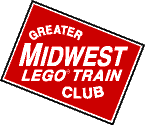
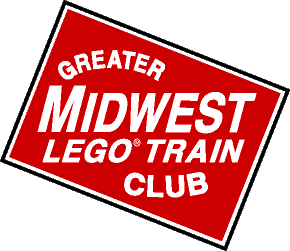
Here is an older version that did not make the cut (the name Upper instead of Greater was also being toyed iwth)
Here is the Milwaukee road logo courtesy of Mookie. Thanks! You can clearly see the similarity!
